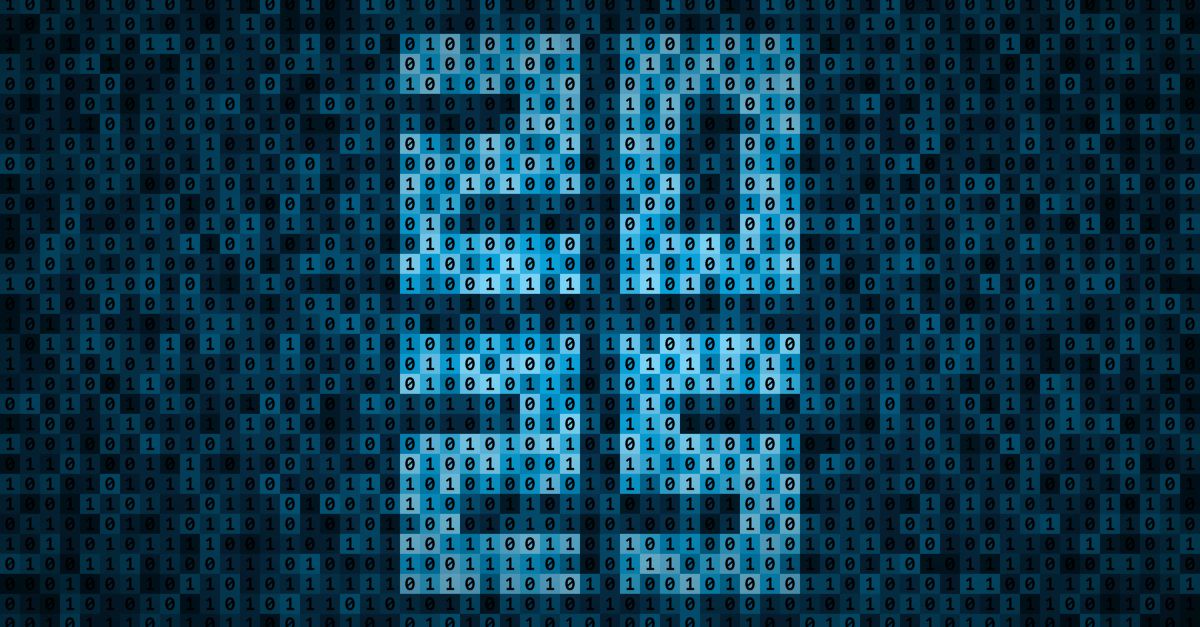As the backbone of online trust and security, Certificate Authorities (CAs) play a pivotal role in securing digital communications. With rapid technological advancements, CAs constantly face challenges in maintaining online trust and certificate integrity and security, leading them to adopt new encryption algorithms and automation capabilities.
In this blog, we will highlight emerging trends that are shaping the future of digital security and how CAs operate and develop new methodologies for safeguarding digital assets and communications. Keeping yourself updated with these developments is critical for your business to be at the forefront of digital trust.
Latest Advancements in Certificate Authority Security Protocols
New S/MIME Baseline Requirements
The S/MIME baseline requirements are a set of standards designed to ensure the proper issuance and management of digital certificates, meeting industry security benchmarks. These standards establish minimum criteria for certificate issuance and management. They are intended to guide publicly trusted Certificate Authorities (CAs) or their designated registration authorities in what should be incorporated in their Certificate Practice Statements (CPS).
Implementing these requirements will provide email recipients with a reliable level of confidence that the sender of an email, identified by the S/MIME certificate, truly controls the domain or mailbox from which they are sending emails. Essentially, this process is about leveraging verified digital identities to build digital trust.
TLS and Post-Quantum Cryptography
Post-quantum cryptography comprises cryptographic algorithms that could potentially be resistive against attacks initiated by a quantum computer.
Quantum computers may be able to break through the current encryption algorithms that Certificate Authorities have relied on to protect online identities with root certificates and intermediate certificates, specifically TLS (Transport Layer Security). As a result, there is a growing interest in developing new cryptographic techniques that can withstand the advanced computational capabilities of quantum computing and integration of post-quantum cryptography into TLS.
Current research efforts are exploring the possibility of creating quantum-resistant algorithms that can protect user data and identities in case of a quantum attack. However, these algorithms are still being evaluated for their security and practicality.
90-Day TLS Lifecycle
In the past, TLS certificates were valid for up to 397 days, provided that the certificate wasn’t compromised during that timeframe. However, after the Certification Authority Browser Forum (CA/B Forum) face-to-face meetings held in Q1 2023, the TLS lifecycle was reduced to just 90 days. This approach is part of a broader move towards enhancing online security and trust.
The shorter lifespan of TLS certificates enhances security in several ways:
-
Frequent Renewal: Regular updates reduce the window of exposure if a CA certificate is compromised.
-
Automated Management: The short lifecycle encourages automation in certificate management, reducing human error.
-
Compliance with Standards: Aligns with best practices recommended by security experts and organisations like the CA/B Forum.
-
Rapid Response to Threats: Enables quicker response to new vulnerabilities or threats.
The Rise of Automated Certificate Management Systems
Automated certificate management encompasses automating the issuance and renewal of certificates, removing the need for human interaction in the process.
The most widely recognised certificate management protocol is the ACME (Automated Certificate Management Environment) protocol, designed by the Internet Security Research Group (ISRG) for their SSL certificate service.
ACME automates the whole process of certificate management by installing an open-source agent and authorising the agent to perform certificate management activities at scheduled intervals making the whole process more efficient, as well as time and cost-effective.
With ACME, you can organise and automate domain ownership verification, CSR generation, issuance, and installation of certificates. It also allows you to provision SSL/TLS certificates for any server with an ACME agent installed, including non-Microsoft machines.
Once the ACME agent has been set up and verified, you can automate the certificate operations. For issuance of a new certificate, the agent will generate a CSR for the domain that needs the certificate and send it to the CA via HTTPS. The steps are as follows:
-
A CSR will be generated by the agent for the domain.
-
The public key generated with the CSR will be signed by the agent using the corresponding private key.
-
The agent signs the whole CSR with its private key that was generated at the time of the initial configuration.
-
The Certification Authority issues digital certificates for the domain after the verification process for both signatures is complete.
-
The agent receives the certificate and installs it on the appropriate domain.
The renewal process is similar to issuance. For renewal, you will have to configure the agent to ping the CA routine requests at pre-defined intervals. This allows it to rotate keys or switch to a new certificate as the admin prefers. The entire process is executed at the back end, eliminating the need for manual processing.
To revoke a certificate, the agent will need to sign a revocation request with its key so that the CA can verify the signature to confirm if it is a valid request. Once the CA revokes the certificate, it publishes the information to the relevant Certificate Revocations Lists (CRLs). The steps that are followed are given below.
A revocation request is generated by the agent for the concerned SSL/TLS certificate, and it’s carried out as follows:
-
The agent uses its private key to sign the revocation request.
-
The CA verifies the signature to confirm the validity of the request.
-
The CA revokes the requested certificate.
-
The certificate’s revocation status is published to the relevant CRLs.
An admin can initiate a revocation request. However, the revocation process after the request is placed is entirely automatic.
Integrating Certificate Automation into DevOps and IT Systems
Digital certificates are crucial in securing DevOps environments, but their management often suffers due to reliance on manual processes. These manual methods are slow, error-prone, and inefficient, leading to problems such as orphan certificates and increased risk of network outages or breaches. Not to mention, teams may resort to unregulated means, like procuring certificates from various CAs or creating self-signed certificates, to mitigate the delays in certificate issuance and renewal, leading to inconsistent management and vulnerabilities.
The manual monitoring of certificates, considering their growing numbers, is increasingly complex. This complexity is compounded in environments with frequent setup and teardown of containers and virtual machines, making manual tracking impractical.
Key issues with manual certificate management include lack of visibility, centralised control, and consistent communication with Certificate Authorities (CAs). This undermines DevOps agility and effective certificate management.
To address these challenges, integrating automation into certificate lifecycle management is essential. Automation simplifies certificate management by standardising processes and integrating with DevOps tools like Puppet, Chef, and Ansible. This integration allows for secure, efficient handling of digital identity certificates.
Automated systems offer a unified interface for requesting and installing certificates directly within the CI/CD pipeline, bypassing the need for separate ticketing systems. This not only speeds up certificate procurement and provisioning but also provides end-to-end visibility, allowing for quick identification and resolution of issues.
Navigating New Global Cybersecurity Regulations: A Challenge for Certificate Authorities
Tasked with upholding compliance standards while ensuring secure digital transactions, CAs face unprecedented challenges in navigating the landscape of global security regulations. Newly introduced frameworks, like eIDAS 2.0 and the advent of European Digital Identity Wallets (EUDI Wallets), have a significant impact on how CAs operate within the regulatory sphere.
eIDAS 2.0 stands as a cornerstone, establishing standardised rules governing electronic identities and trust services within the European market. It's not merely about preserving trust but also amplifying user control over personal data, a stride forward in fortifying privacy rights and bolstering user autonomy.
The scope of eIDAS 2.0 has notably broadened to encompass an array of electronic trust services beyond signatures and timestamps. Services like registered delivery, authentication certificates, and electronic seals for documents are now under its purview. This expansion emphasises the pivotal role of digital identities in online interactions while underlining the necessity for additional verified attributes, such as professional qualifications or medical certificates, validated by a qualified trust service provider.
Amidst these changes, the EUDI Wallet emerges as a significant tool, streamlining access to online services and secure transactions for both individuals and businesses. Consolidating electronic identification and trust services into a centralised repository empowers users to conveniently manage and utilise their data and certificates as needed, with a user-centric approach where individuals maintain full control over their personal information.
Moreover, the evolution of regulations extends beyond eIDAS 2.0. The upgraded ACSC Essential Eight and the Security of Critical Infrastructure Act mandate robust security measures for critical systems operated by Australian entities. This necessitates not only compliance but also an agile adaptation by Certificate Authorities to align with these enhanced standards.
For instance, GlobalSign, as a Qualified Trust Service Provider, aligns seamlessly with these evolving standards. It offers solutions that cater to the requirements of eIDAS regulations and the PSD2, ensuring adherence to different compliance frameworks while facilitating secure digital transactions.
Machine Identity and the Future of Certificate Authorities
The role of Certificate Authorities has evolved to address the increasing demand for machine identities, especially within the Internet of Things (IoT). Machine identity management focuses on the governance of digital certificates and keys for various digital entities, ensuring data security, integrity, and regulatory compliance through authentication and encryption.
Machine identity solutions incorporate Public Key Infrastructure (PKI), Hardware Security Modules (HSM), code signing, and IoT-specific security features. These solutions create secure, interconnected environments and provide a central platform for managing endpoints and infrastructure.
They also offer high-assurance, certificate-based identities, ensuring secure data and communication for machines. They are scalable and capable of handling complexities like diverse machine types and transient credentials.
Centralised control is essential for comprehensive endpoint management, with an emphasis on security through FIPS 140-2 Level 3 certified nShield hardware security modules. CAs offer these modules both on-premises and as a service.
Further, device certificates, particularly IoT SSL certificates, play a crucial role in enhancing data security in IoT contexts. CAs issue digital certificates for machines to offer benefits like protection against man-in-the-middle attacks, versatility for various IoT devices, scalability, and ease of implementation. Their importance in maintaining data integrity and bolstering IoT security makes them fundamental for your organisation’s IoT network security and trust.
Conclusion
Staying updated with the evolving trends in Certificate Authority technology is crucial in navigating the complexities of cybersecurity regulations. By keeping informed, you can ensure robust security and compliance for your organisation.
Explore GlobalSign's advanced solutions to address your cybersecurity and identity management needs.







